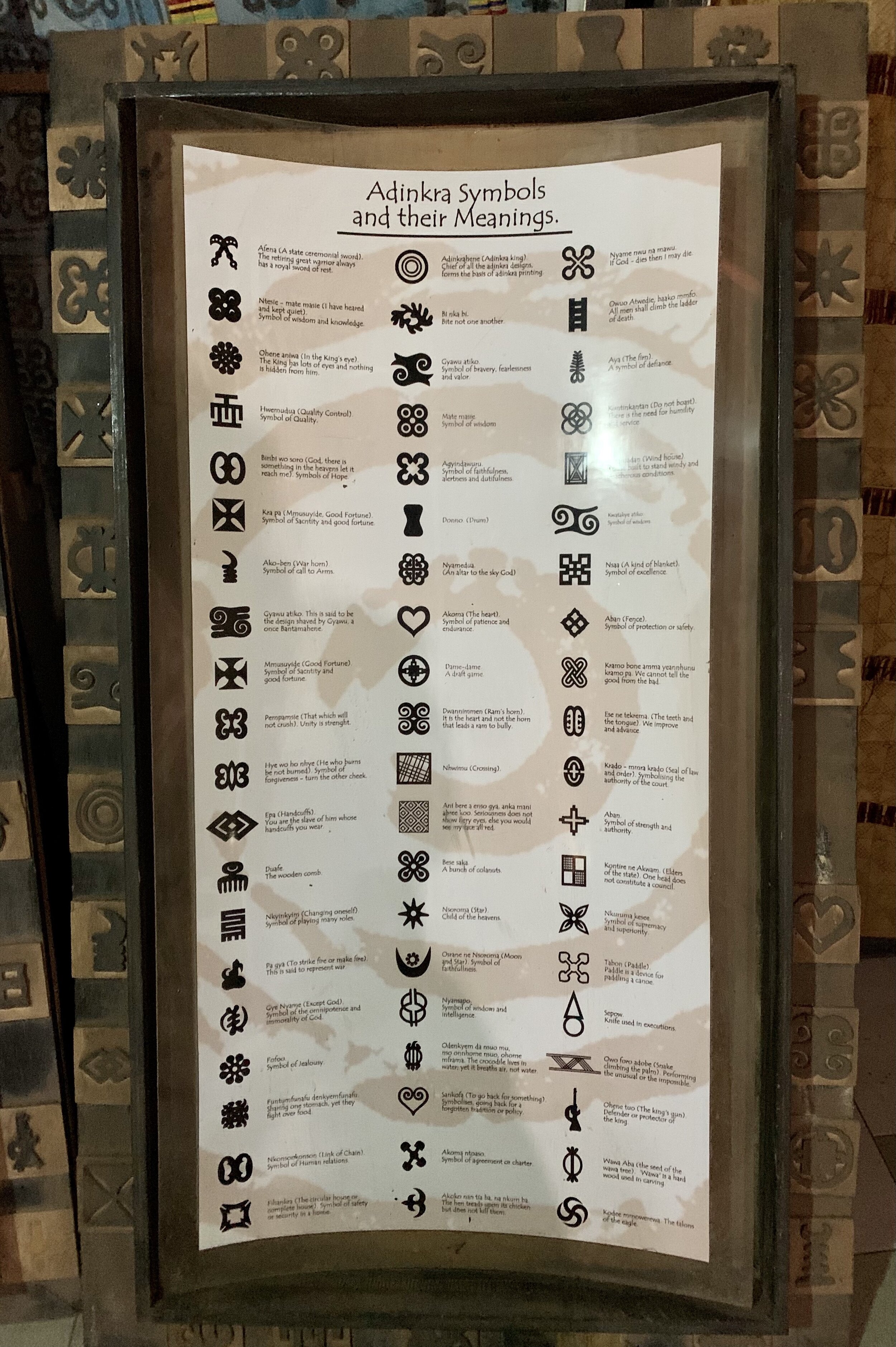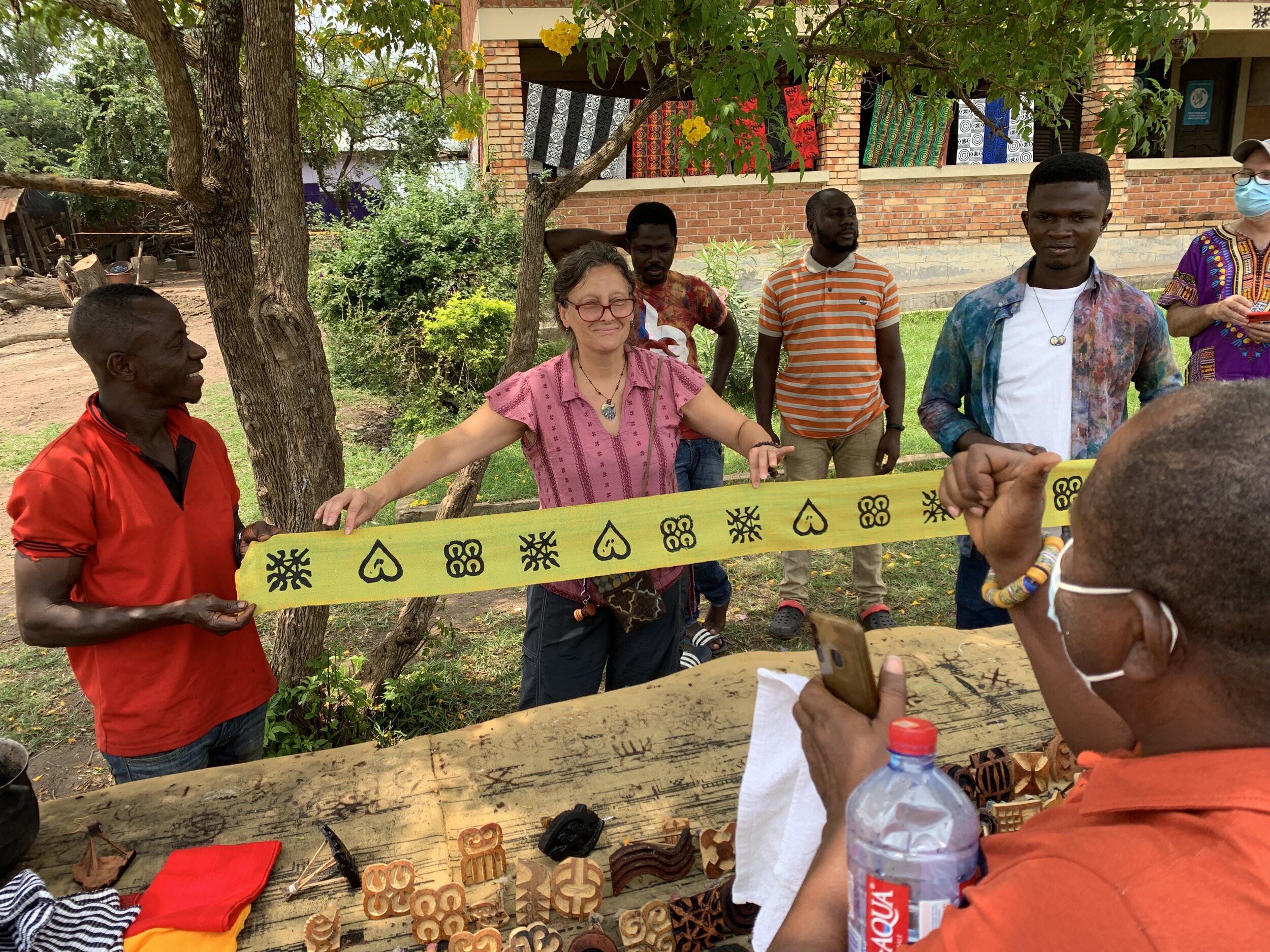Welcome! Akwaaba! My name is Julie Siftar, hailing from Boston, MA, where I am an art teacher at the Carroll school. Let’s take an inside look at our visit to the craft village of Ntonso, where we learned from local artisans about the Adinkra stamp tradition.
Chart of Adinkra symbols and their meanings
Adinkra are traditional symbols that convey messages, concepts and metaphors, often printed onto woven cloth.
Julie in front of Adinkra clothe hanging at the Ntonso craft village
The earliest ones were created in the 1700s, which are on display in the British Museum, rather than in their origin of Ghana. At the Ntonso craft village we walked through the process of how they create Adinkra stamps:
First, the bark of the Boadie tree is soaked until it is softened
It is pounded into a pulp with a large mortar and pestle, just like how Fufu is made!
Cook it down for many hours into a thick, tar-like ink.
While still warm, prepare the fabric and stamps. The Adinkra symbols are carved into stamps, which are made out the calabash gourd.
After a careful dip into the warm gooey ink, apply it with gentle pressure to the fabric, which is held steady over a piece of foam.
Until finally the piece is complete!
The stamps I chose will serve as the classroom symbols for my art students back in the U.S.
Funtumfunafu denkyrmfunafu - The Sharing of One Stomach and yet they fight over food. Because we are sharing an art studio and materials together, this symbol is meant to encourage a respectful sharing of our classroom resources.
Akoma - the heart - the symbol of patience and endurance
Ntesie or Mate Masie - I have heard and kept quiet - the symbol of wisdom and knowledge
A page from my sketchbook of the Adinkra symbol meaning, “It is the heart and not the horn that leads a goat to bully” along with intentions for my teaching practice in the upcoming school year.
– Julie Siftar










